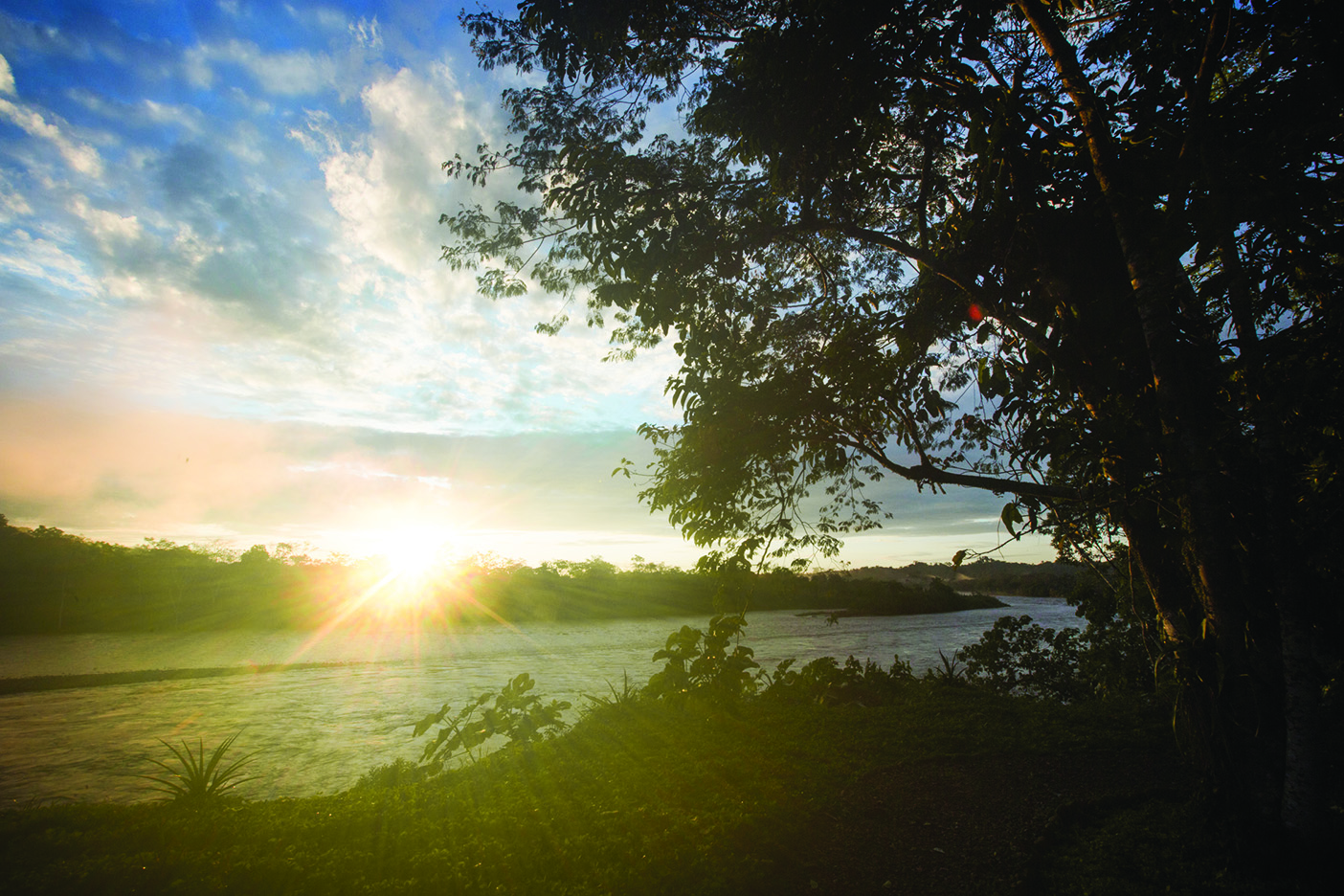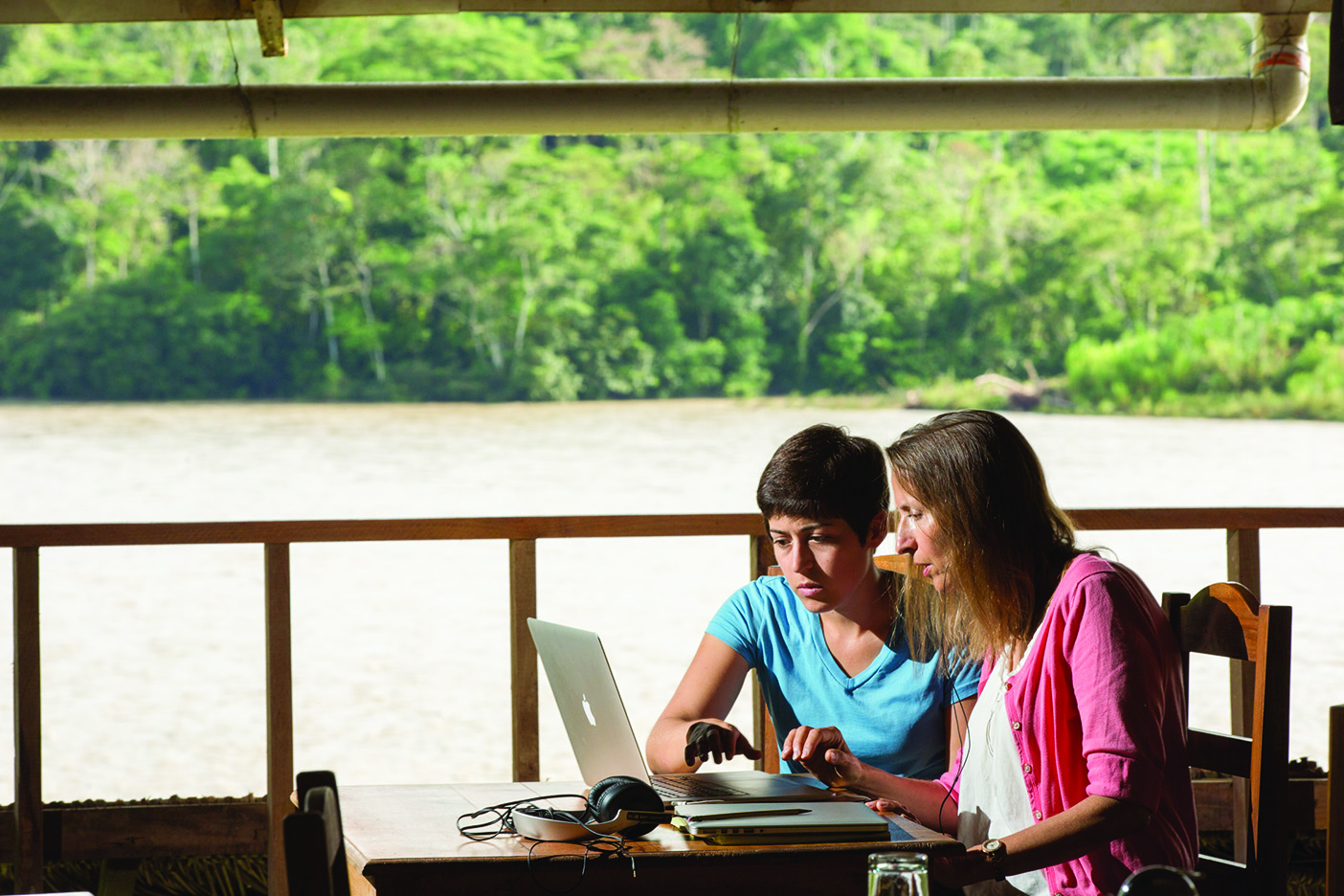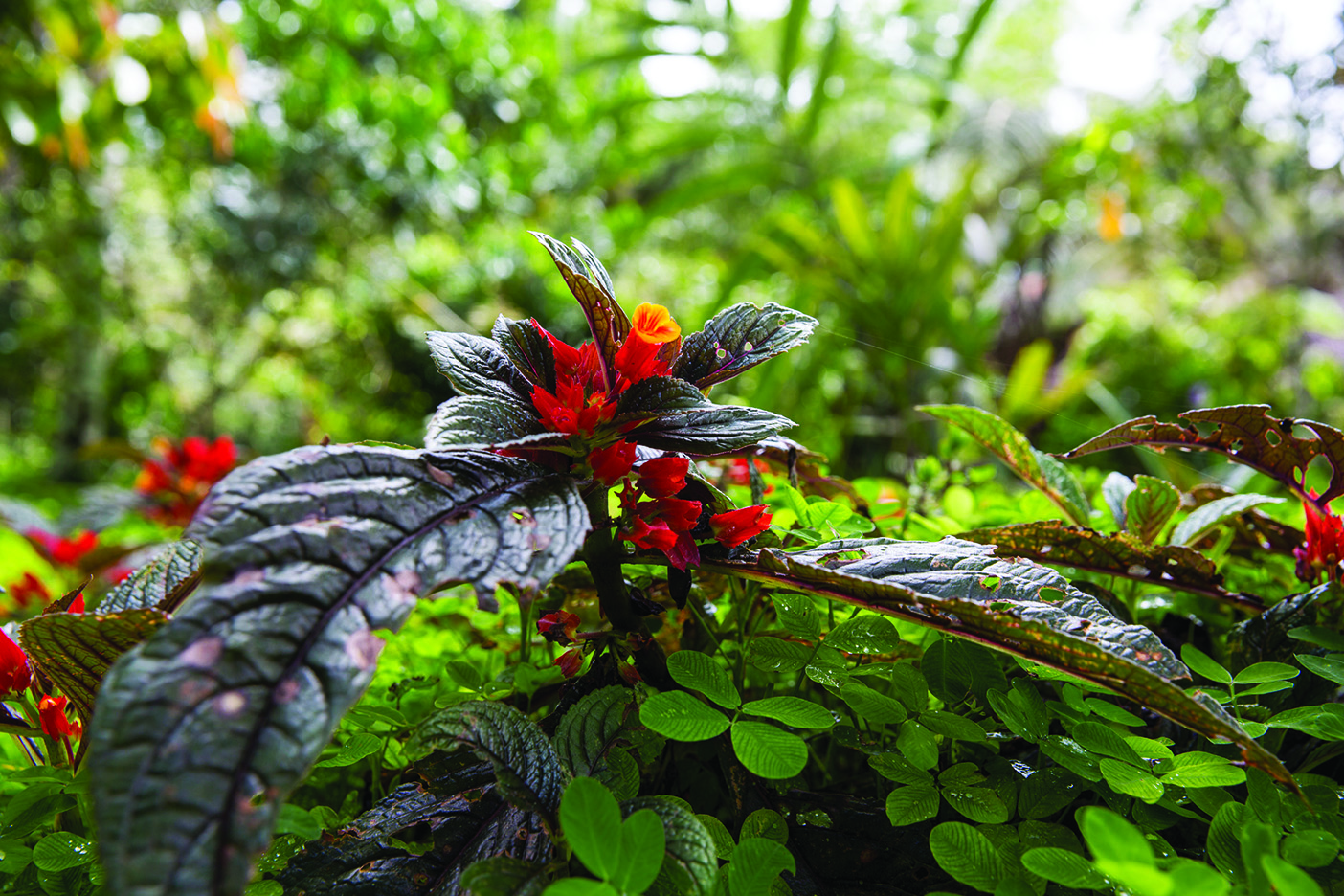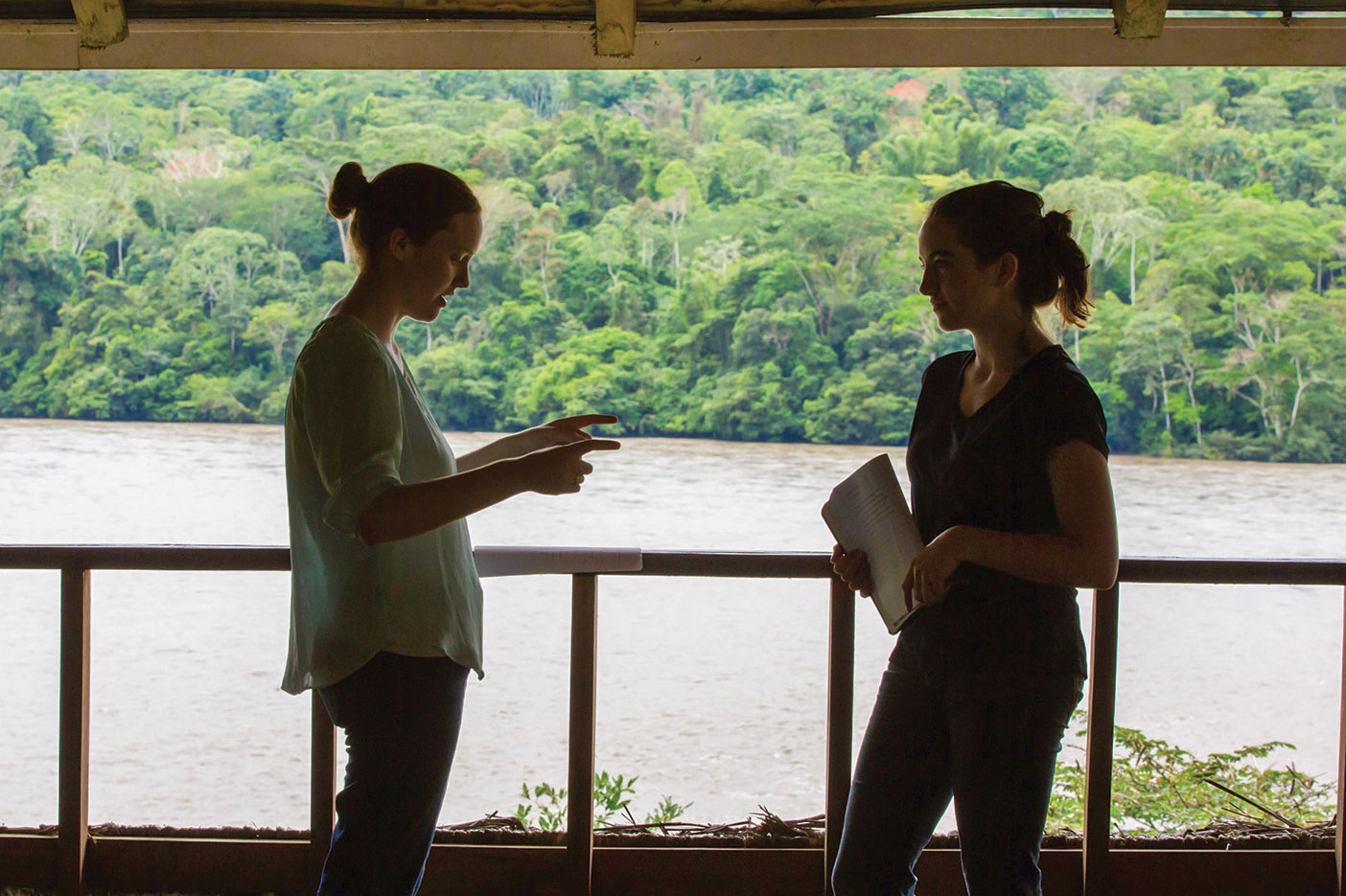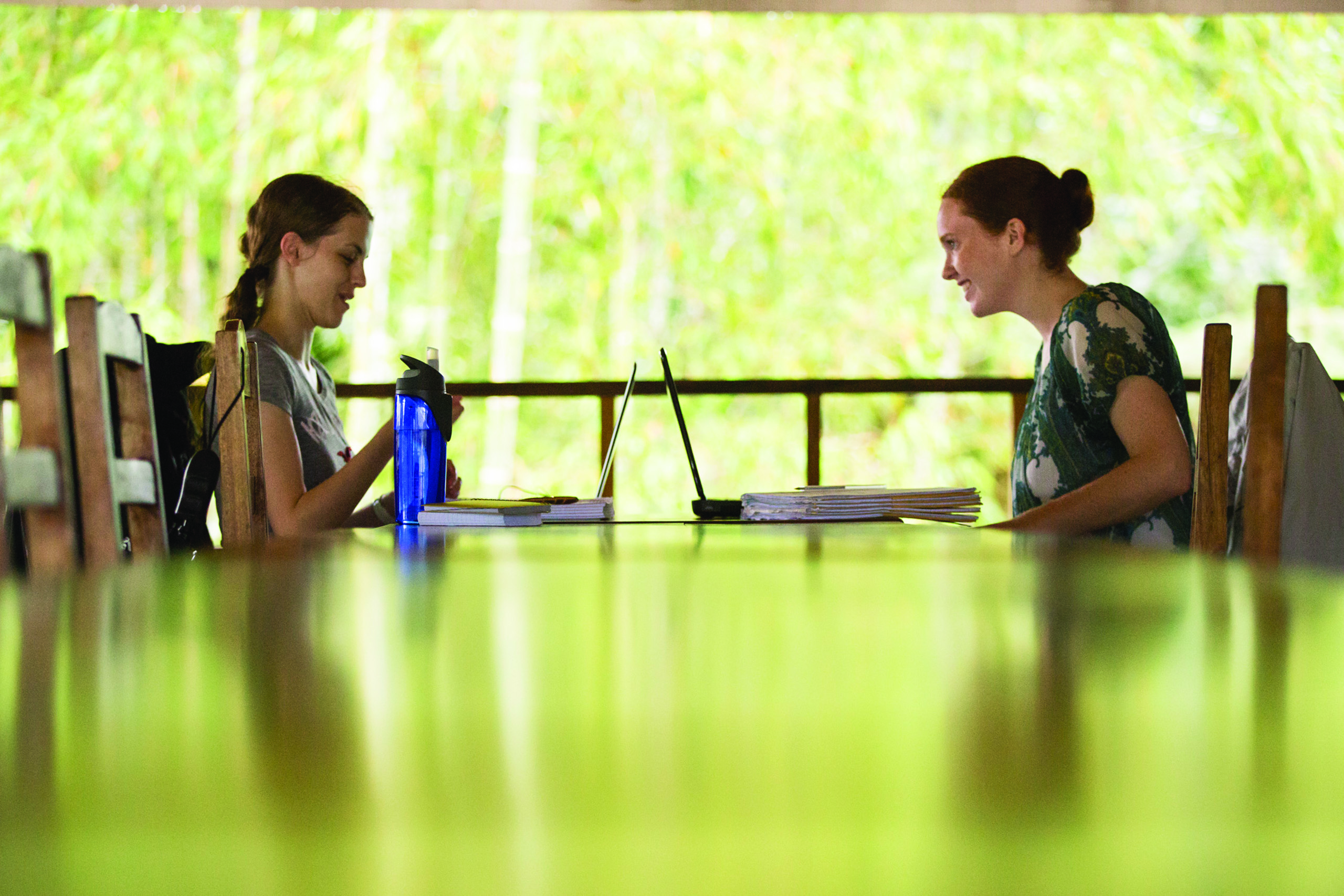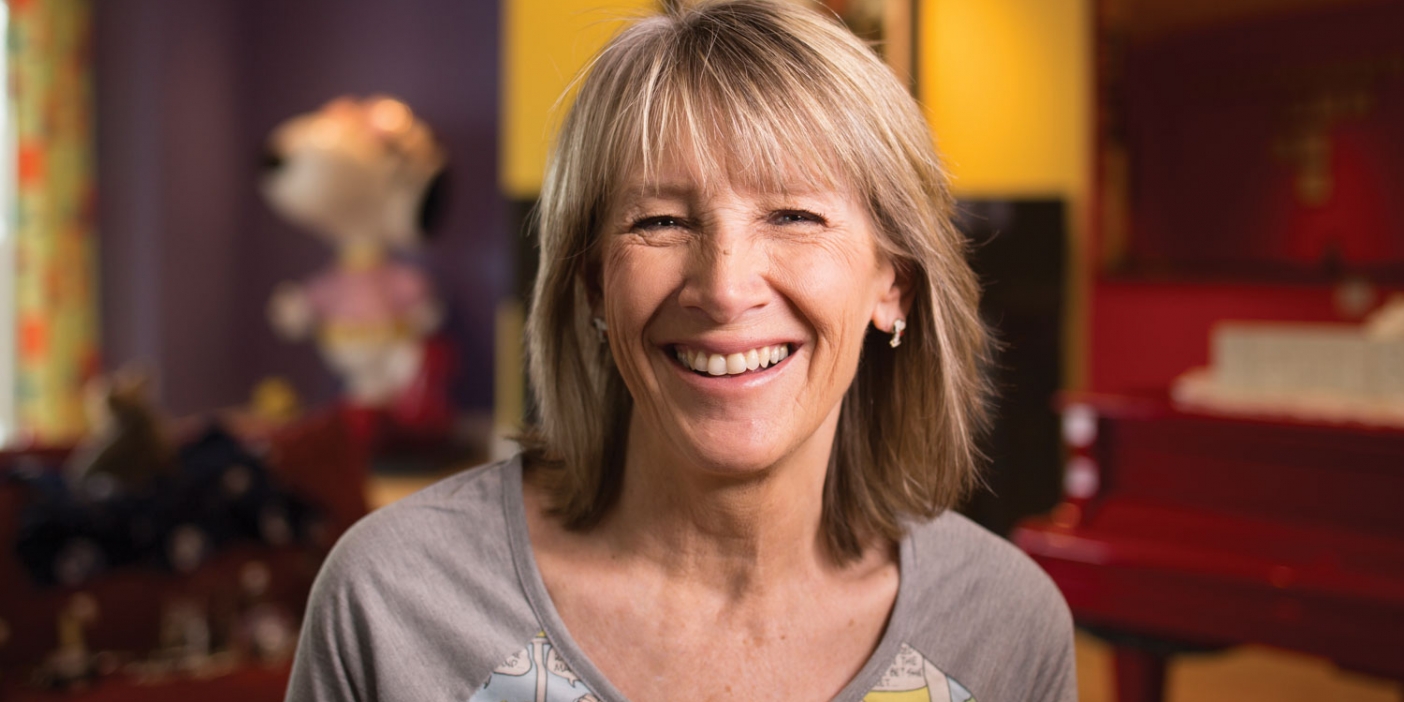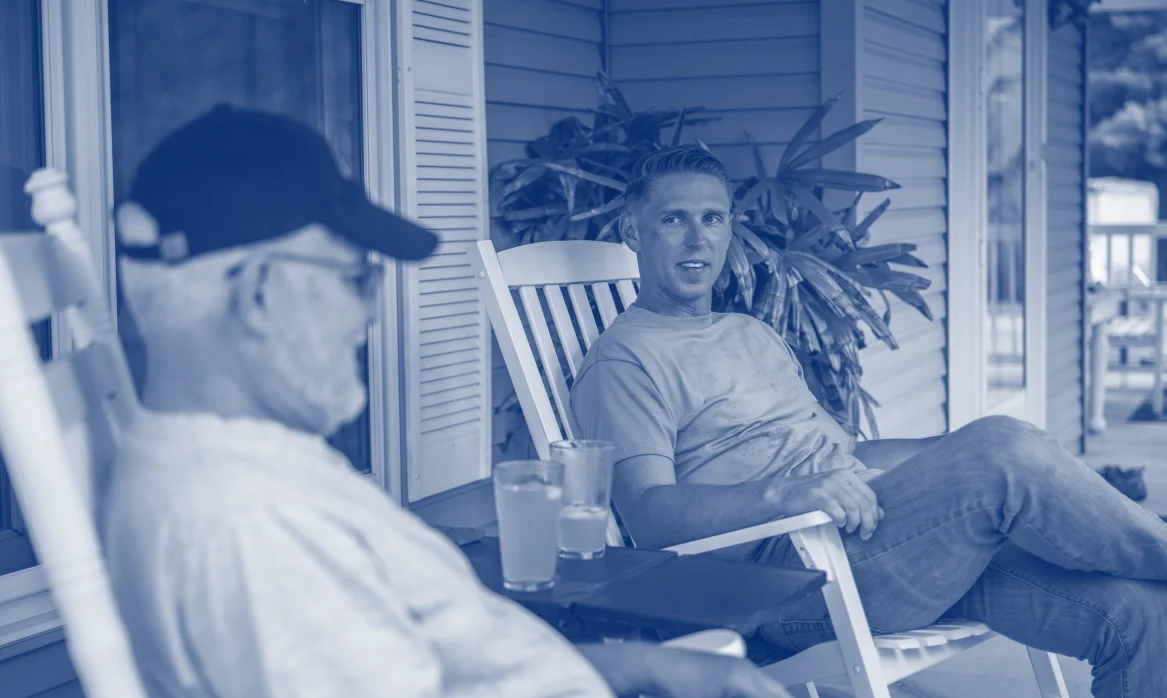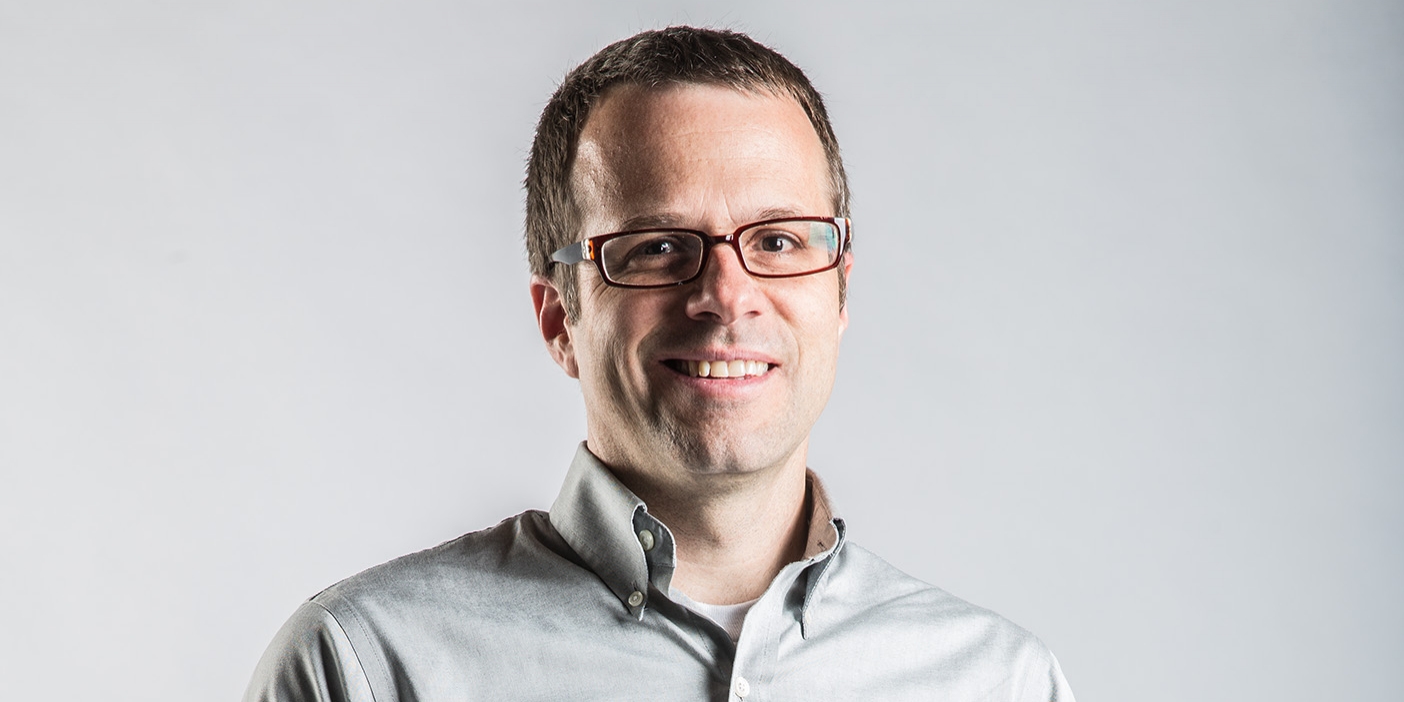Exploring an Ancient Language
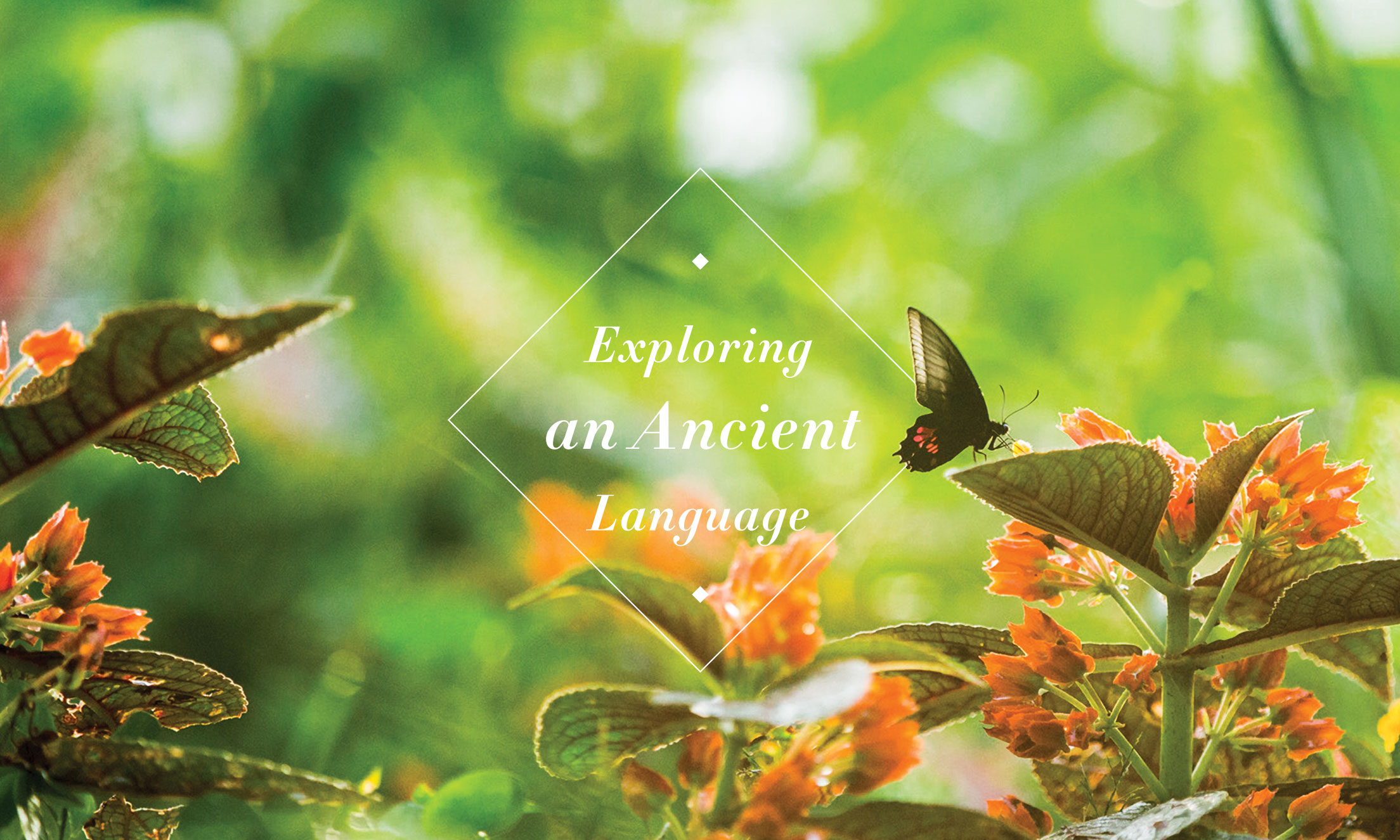
For nearly three decades, BYU professor Janis Nuckolls has been unlocking the secrets of Quichua language and culture.
By Peter B. Gardner (BA ’98, MA ’04) and Jonathan D. McBride in the Summer 2016 Issue
Photography by Jaren S. Wilkey (BS ’01)
Janis Nuckolls first saw Luisa in 1989 at a military airstrip carved from the forests of Amazonian Ecuador. While waiting for a plane, which could be an all-day affair, Nuckolls observed the diminutive native woman in a huddle of locals, busily gossiping, sharing stories, and sparking laughter among her friends. “This would be a delightful person to work with,” Nuckolls remembers thinking.
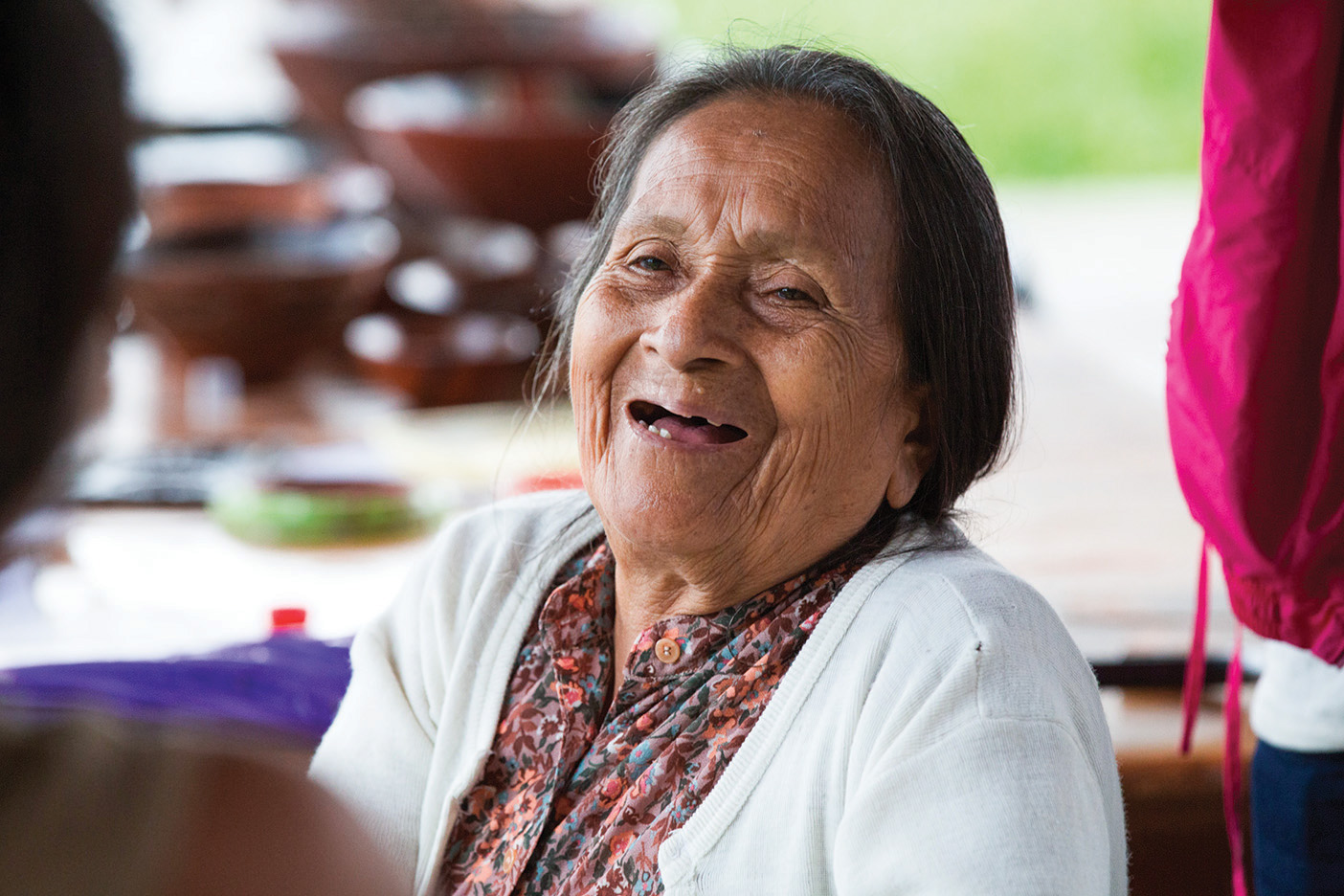
As a University of Chicago PhD student, Nuckolls had already spent a year in the roadless settlement of Puka Yaku, a 40-minute tromp from the airstrip, itself a 30-minute flight from Puyo, the nearest town of any size. For her doctoral dissertation, the budding linguist had gone to Ecuador in search of an immersive experience with native speakers of Quichua, a 2,000-year-old language spoken by millions of people in Ecuador, Colombia, and Peru. She hoped to gain insight into the unwritten tongue’s complicated verb forms—which can take as many as 15 possible suffixes.
For a year Nuckolls had lived with and like the locals, having no running water, electricity, or access to medical care—circumstances she found “extremely uncomfortable” but in which the villagers seemed to find great joy. “Their rainforest surroundings provide a never-ending source of reverence, stimulation, beauty, danger, and humor,” Nuckolls says, noting that these people never seemed bored by their hardworking lives. “At first I was baffled by their culture. Then I was intrigued. Now I admire them a lot.”
“At first I was baffled by their culture. Then I was intrigued. Now I admire them.” —Janice Nuckolls
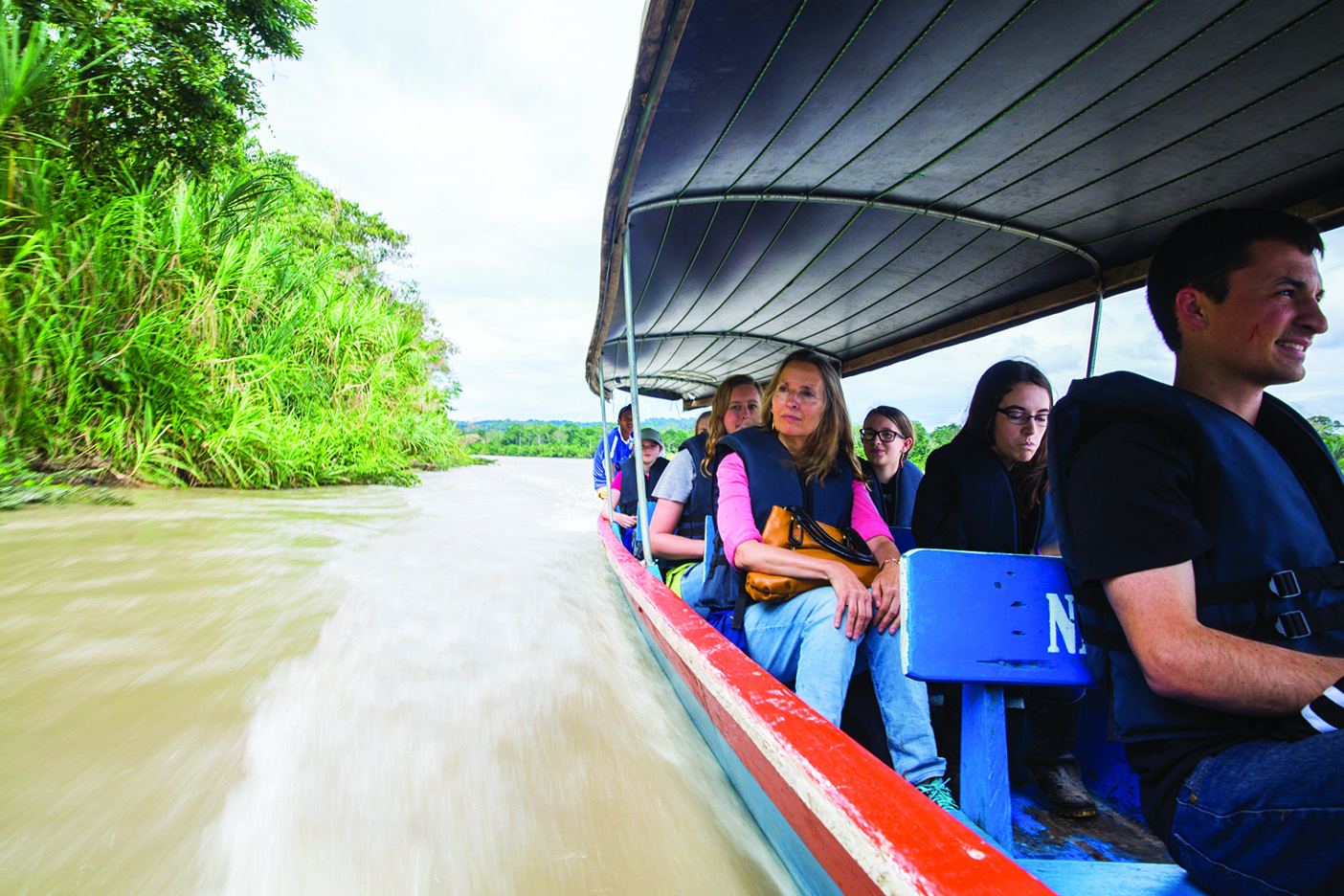
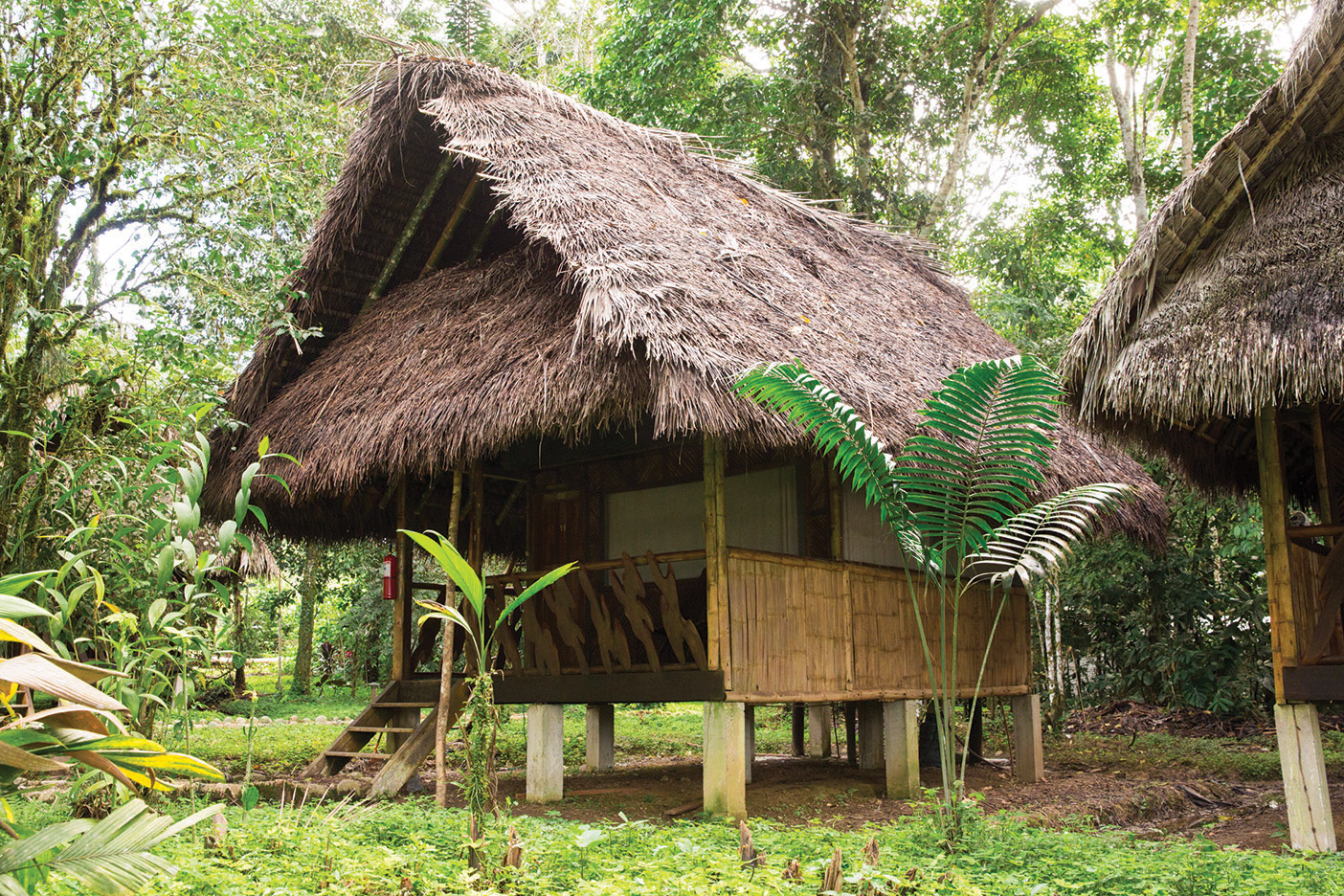

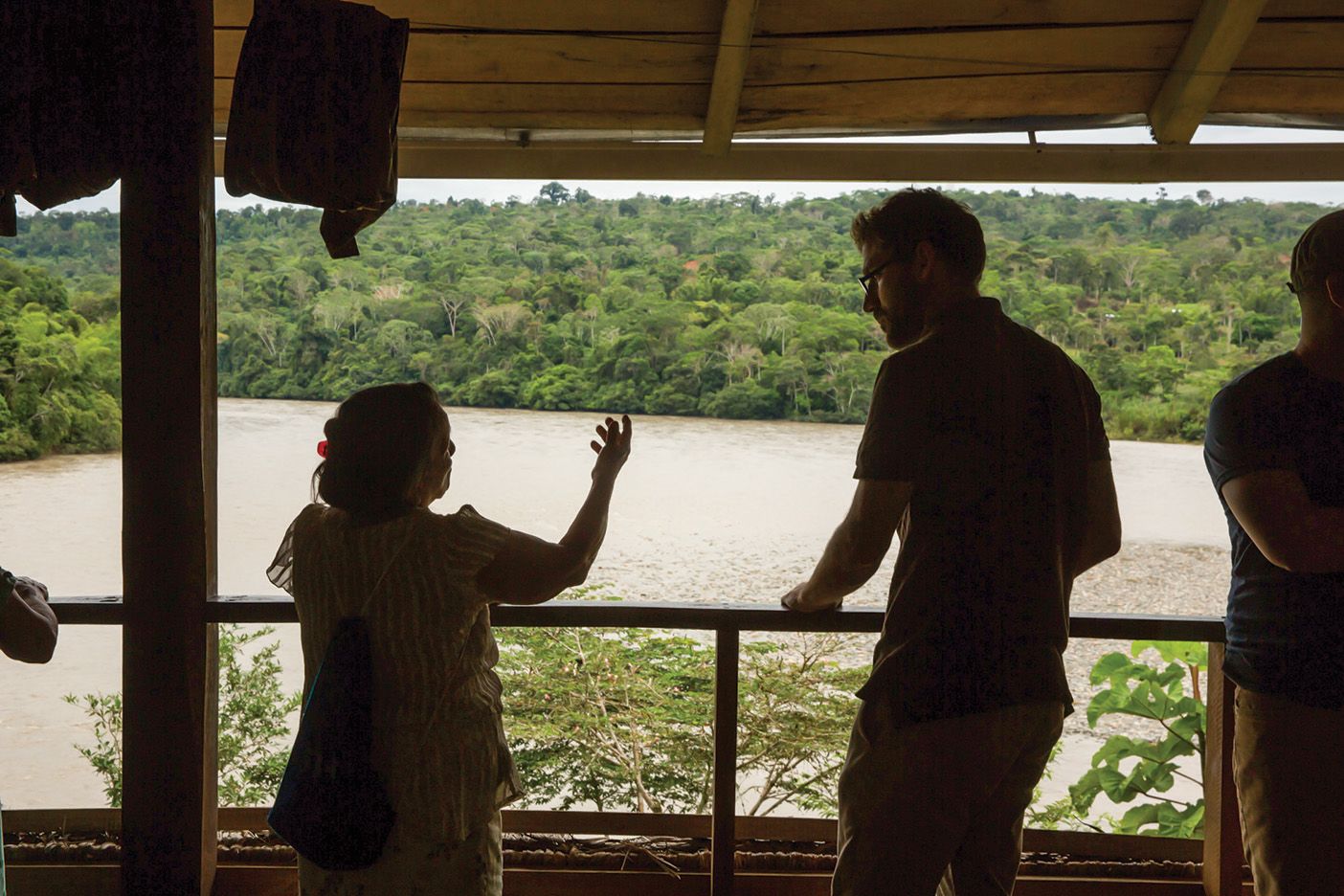
Although the villagers traded with outsiders for a few essentials—machetes, axes, fishhooks, and shotguns—they relied upon the abundance of the forest and the Bobonaza River for nearly everything else. As they mended thatched roofs, hunted wild pigs and turkeys, and farmed potatoes and cacao, Nuckolls watched and listened—recorder in hand.
But her notes and recordings were stacking up as she struggled to untangle the complex linguistic structures of Quichua. “I needed someone to explain things to me and to answer my many questions,” she says. So following their brief flight, Nuckolls introduced herself to the chatty woman from the airstrip. It was a perfect match: Nuckolls had endless questions; Luisa loved to tell stories. They would meet nearly every day for six months to discuss life and language.
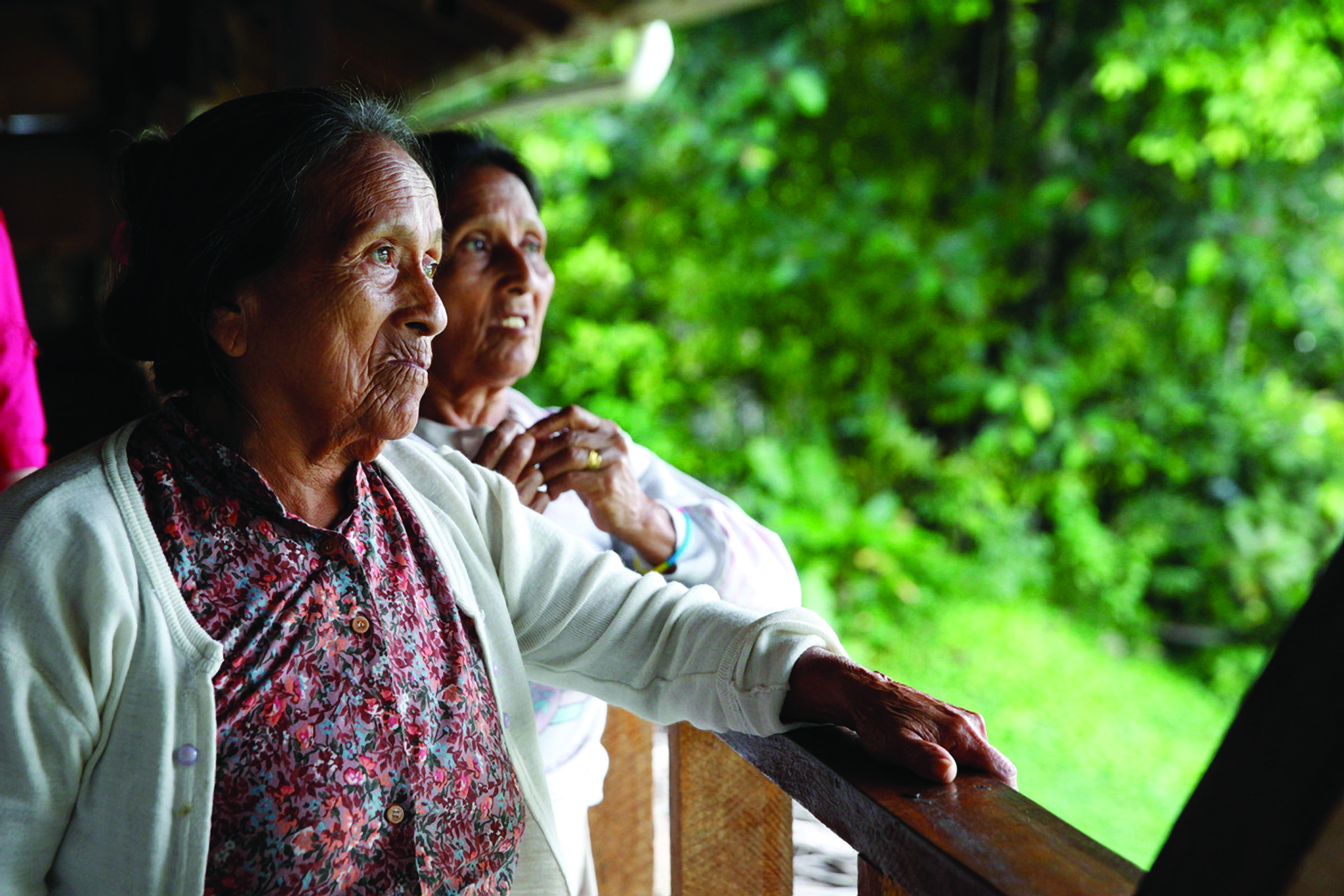
Raised in Puka Yaku, Luisa had moved to Puyo to allow her children to gain an education. As she told Nuckolls of growing up wearing clothing made from tree bark, of fishing and hunting with her parents, of meeting her husband and raising their children, the language finally began to click for Nuckolls. “For the first time in my fieldwork experiences, I started hearing the flow of ideas rather than the clumsy word-for-word sentences.” And those daily conversations would yield more than 600 pages of words for Nuckolls to later study and compare. “I was able to see just how and when these words were used and get an accurate sense of their meanings by comparing and contrasting the different contexts in which they occurred.”
More than three decades since her first trip, Nuckolls, now a BYU linguistics professor, has returned again and again to Luisa and to her other friends in Ecuador to delve deeper into Quichua language and culture, even as these face threats from encroaching outside influences. And, since 2011, she has brought BYU students as part of a field-school experience every other year.
The group stays at the Andes and Amazon Field School (about 40 miles north of Puka Yaku), where scholars and students from around the world converge to explore the understudied native cultures of the area.
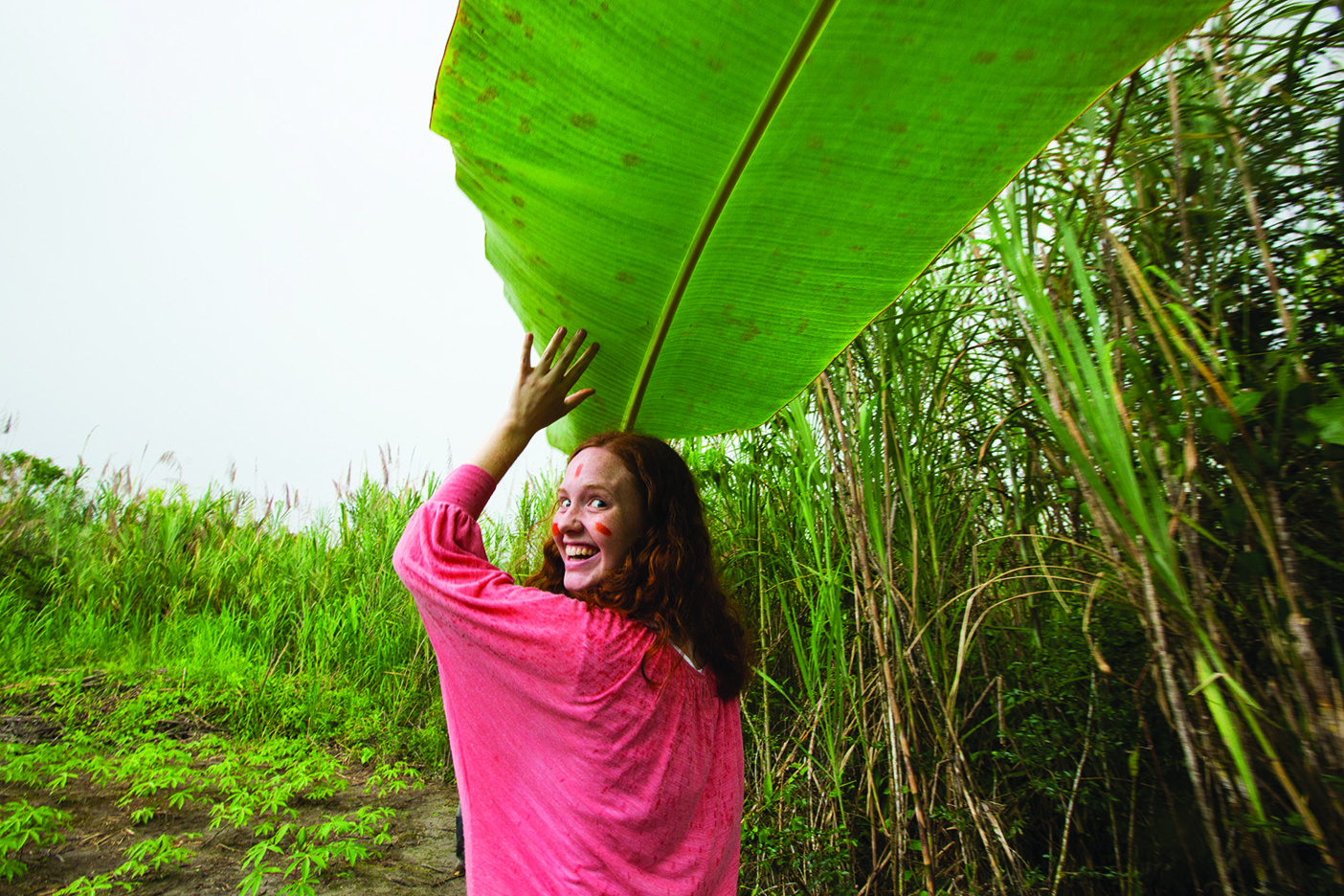

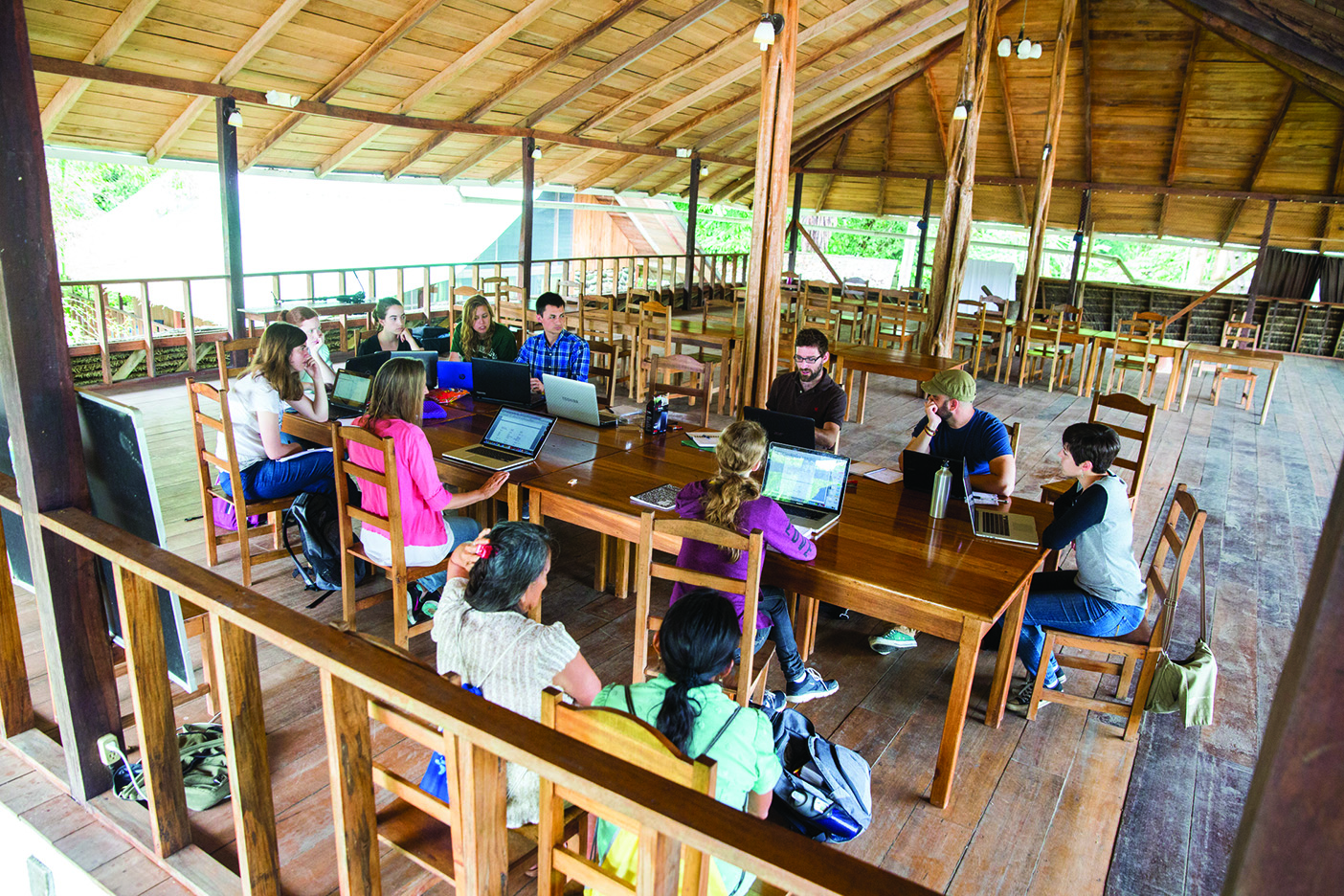
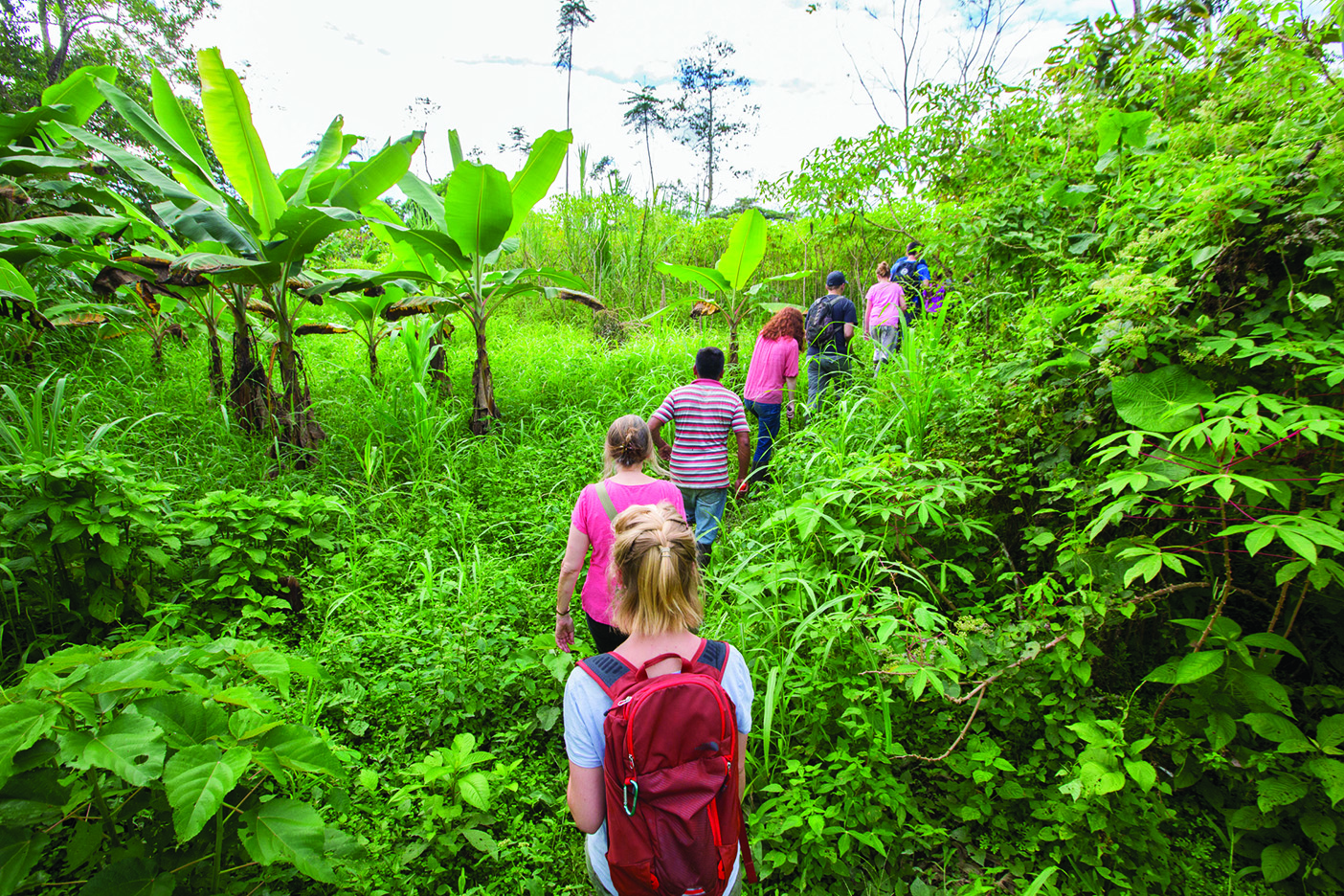
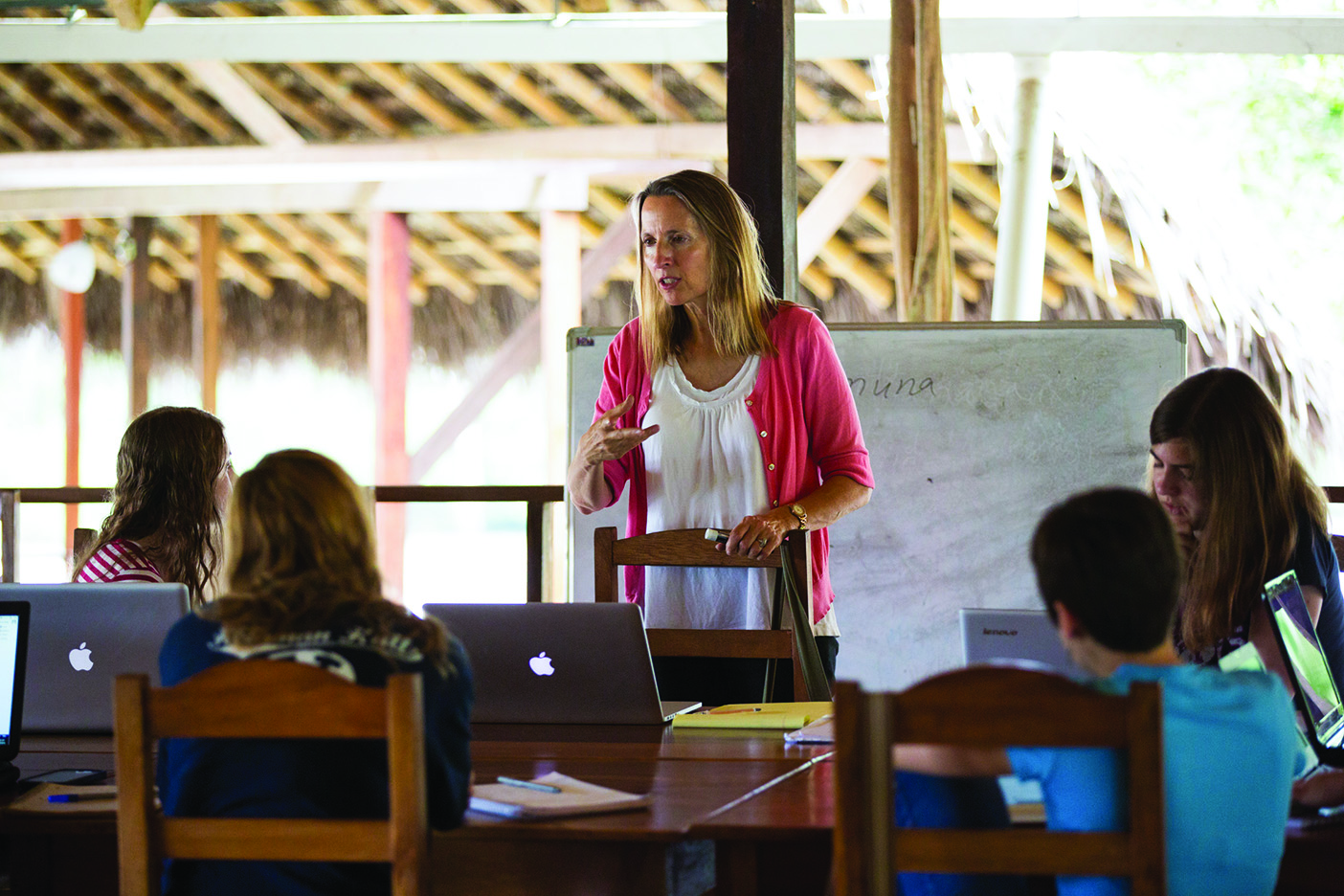
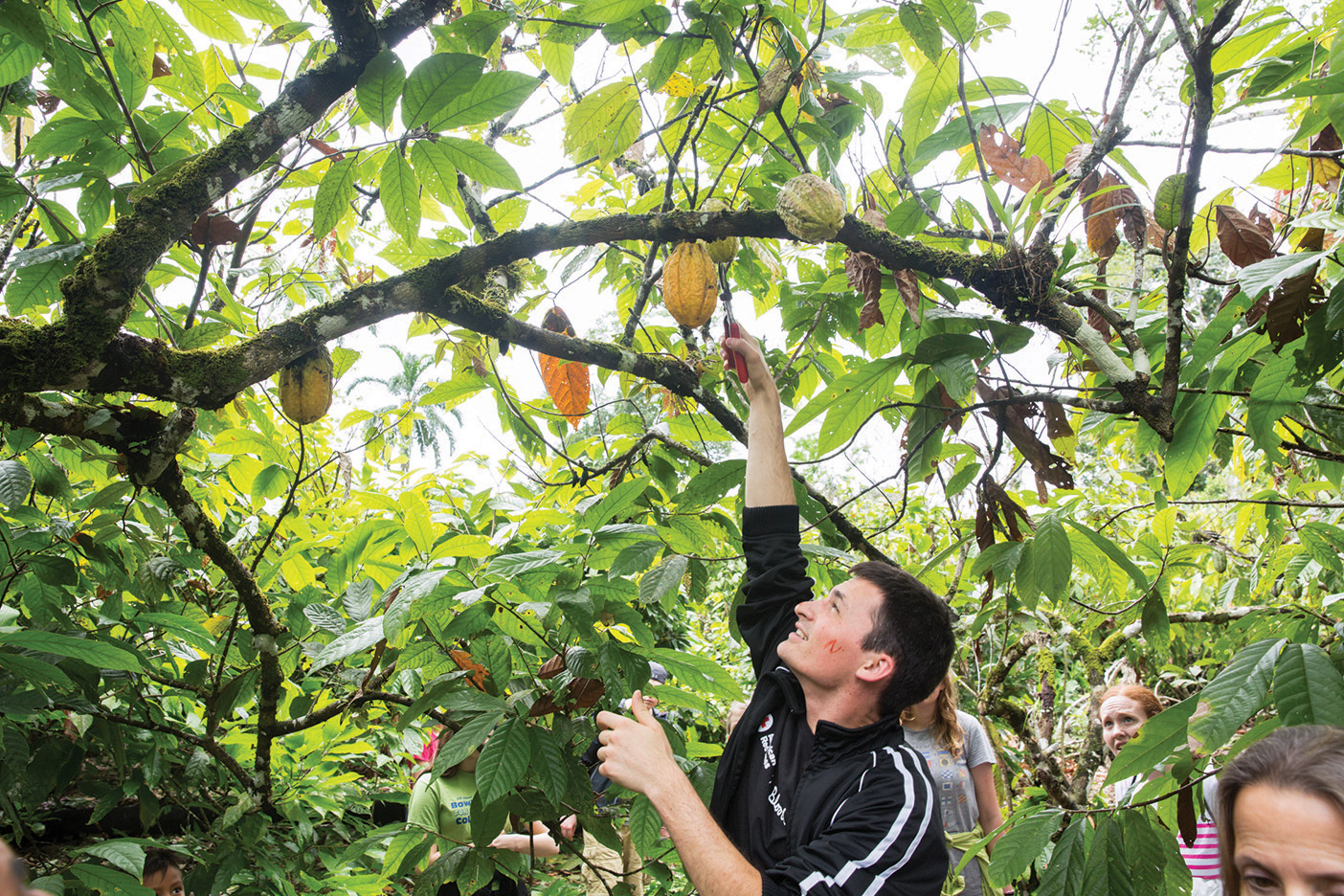
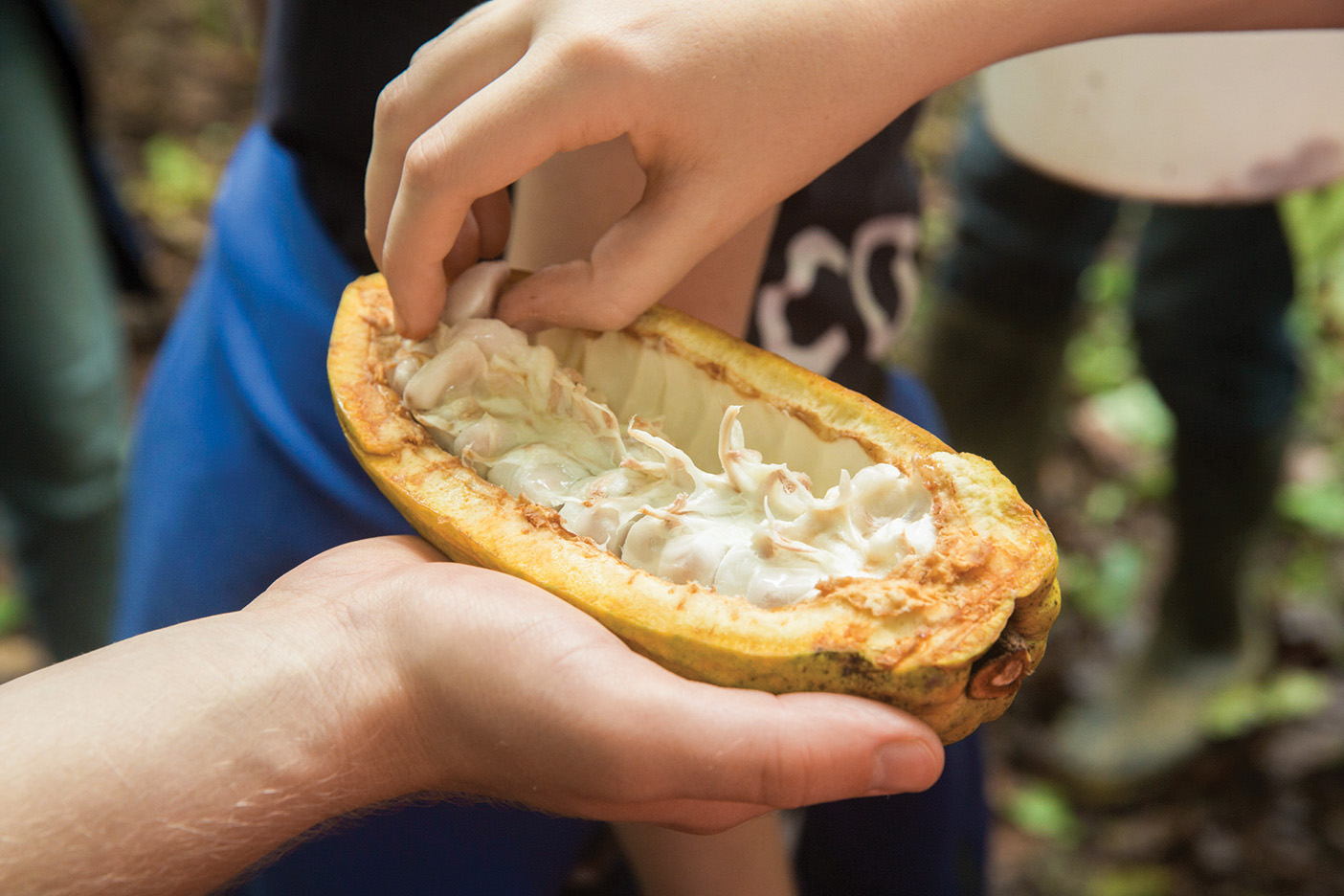
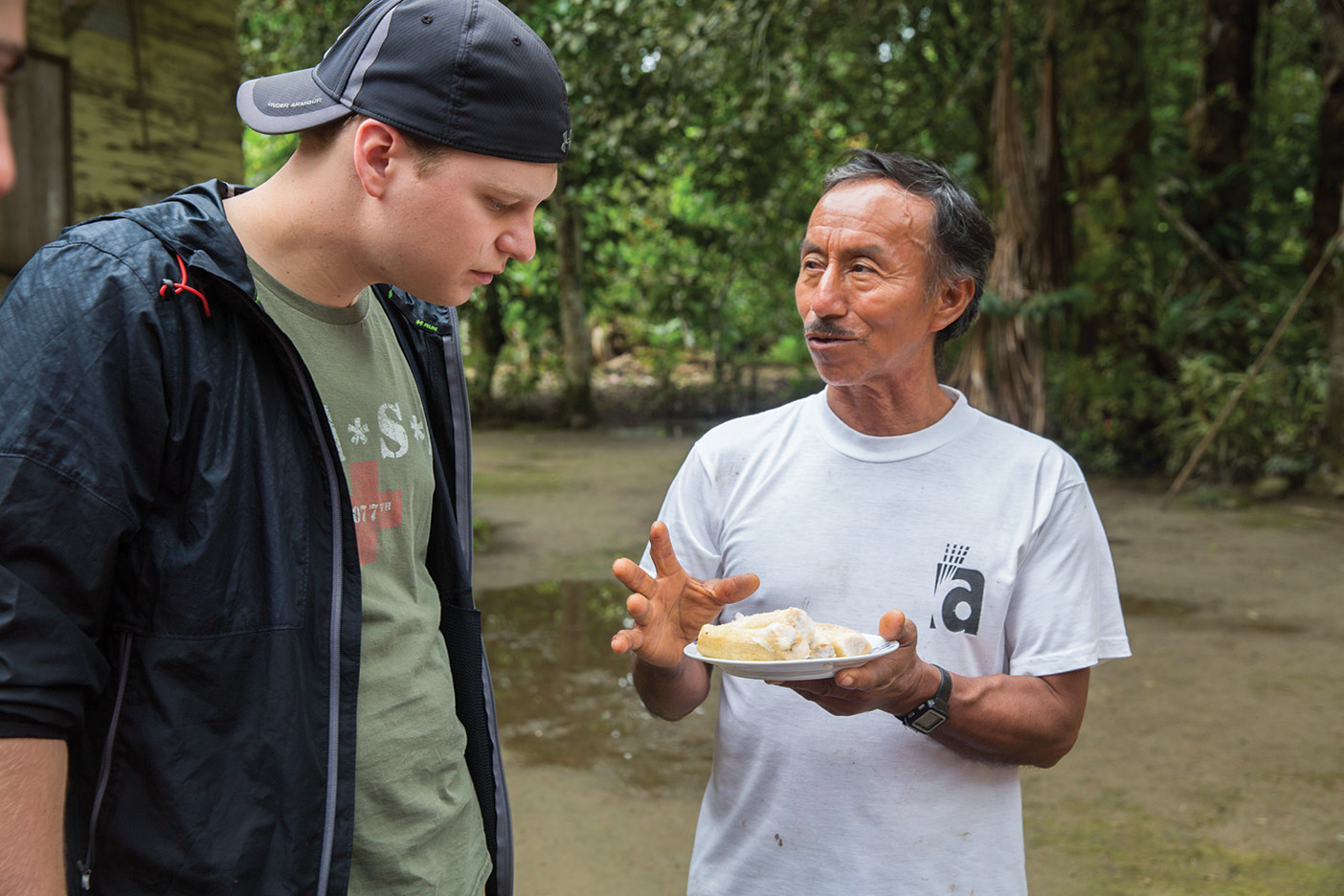
It’s an immersive sensory experience as the chirp of frogs, a verdant glow, and the smell of forest humidity envelop the open-air classrooms, where the BYU students study the Quichua language, anthropology, and linguistics. Students interact regularly with natives who live and work at the school; others, including Luisa and her sister, Elodia, are brought in to speak with students and assist in research projects.
“It’s a lot different from learning in a classroom,” says Emily K. Peterson (’17), a member of the 2015 field-study group. “Sometimes in a normal classroom you feel disconnected from the material. But here, when you get to see the lives that the people live who speak the language that you’re studying, you get to look through a different lens and experience their culture in a more authentic way.”
Nuckolls and her students continue to explore Quichua’s complexities, including one of Nuckolls’s early research interests: ideophones, or words that evoke an idea—often a vivid sensory perception—through sound. In particular, students recently began a study on how Quichua speakers describe colors. Instead of having unique, stand-alone words for each color, they typically refer to something else with the same hue. So to describe something blue, they might say it has the color of a toucan’s tail feather.
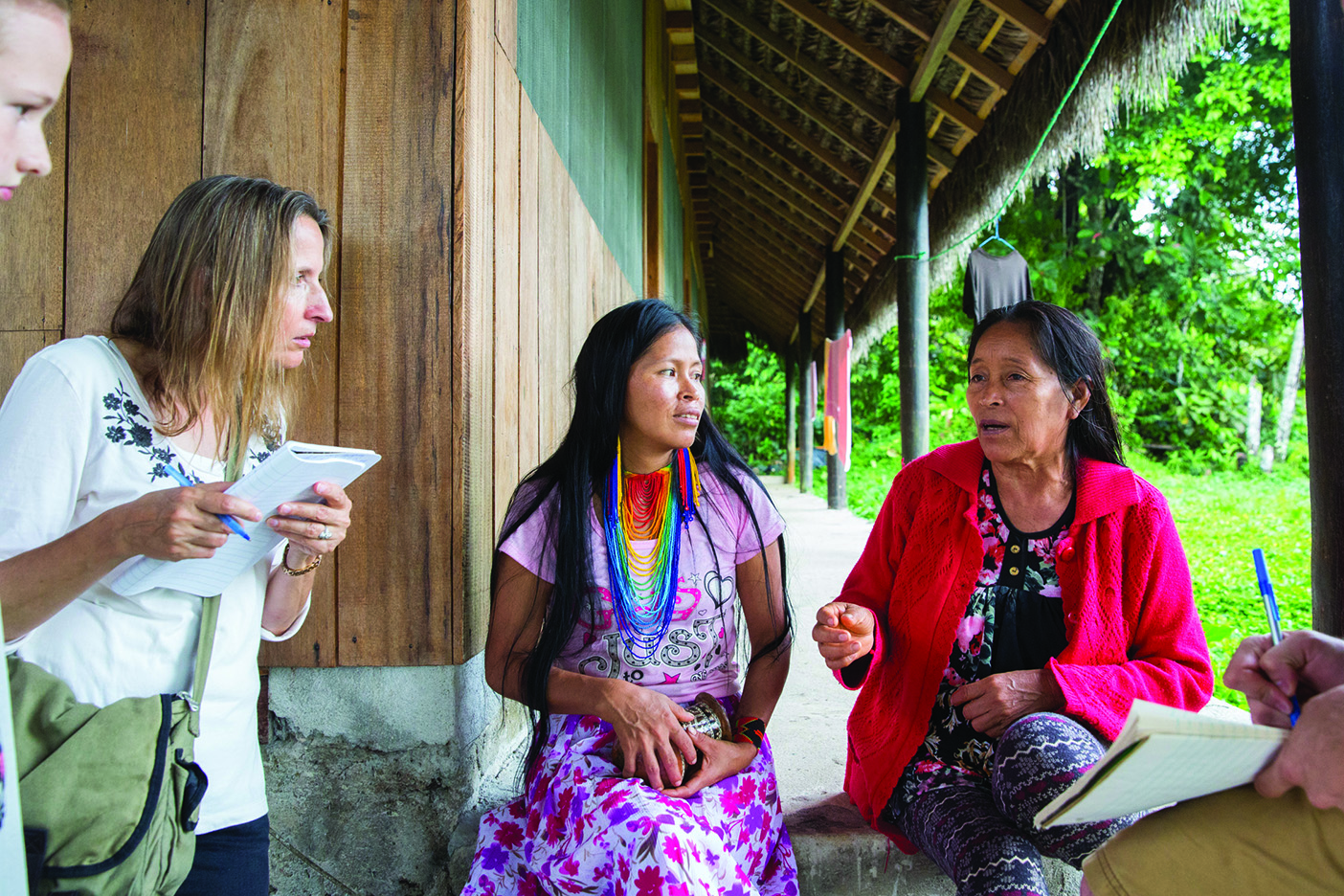
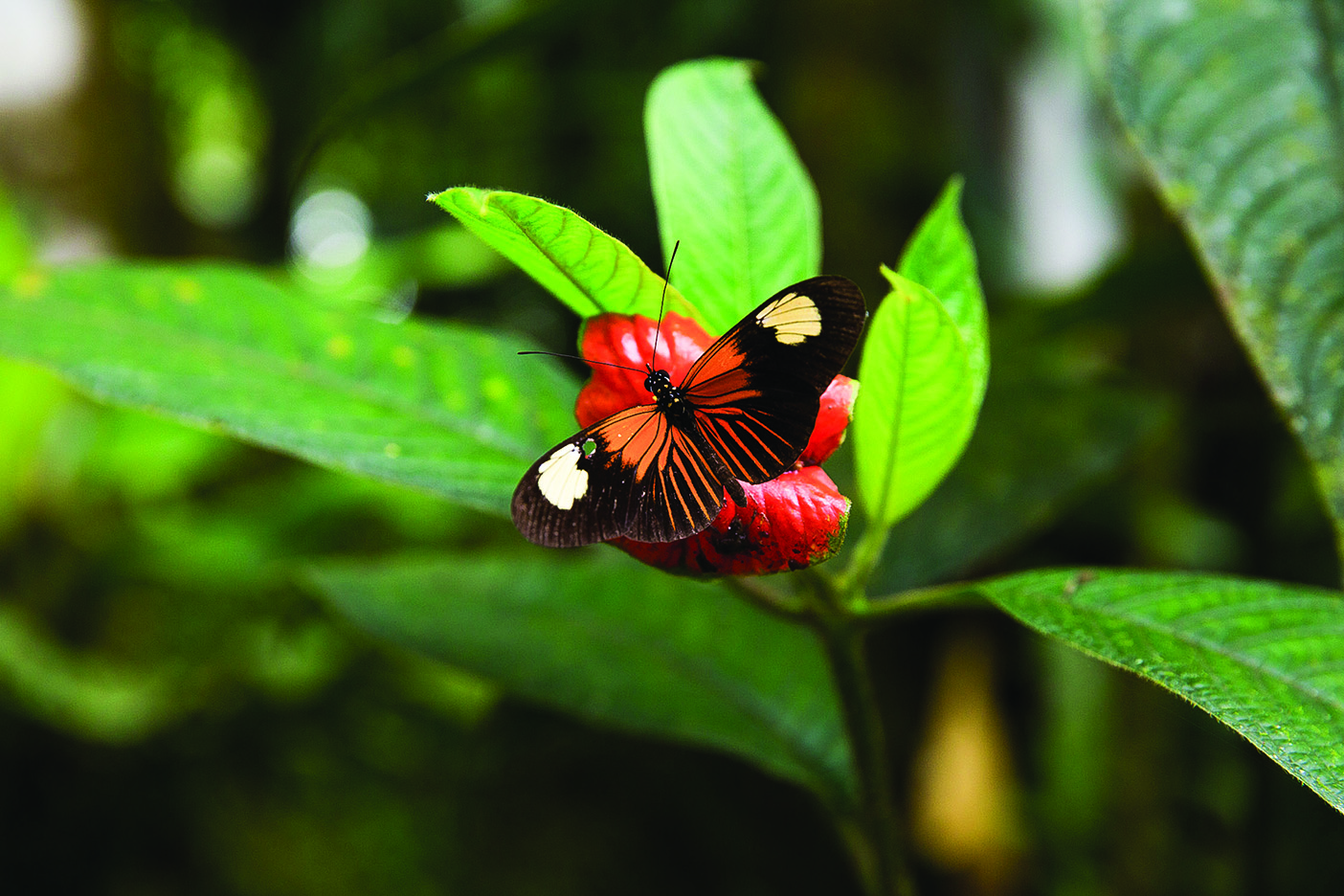
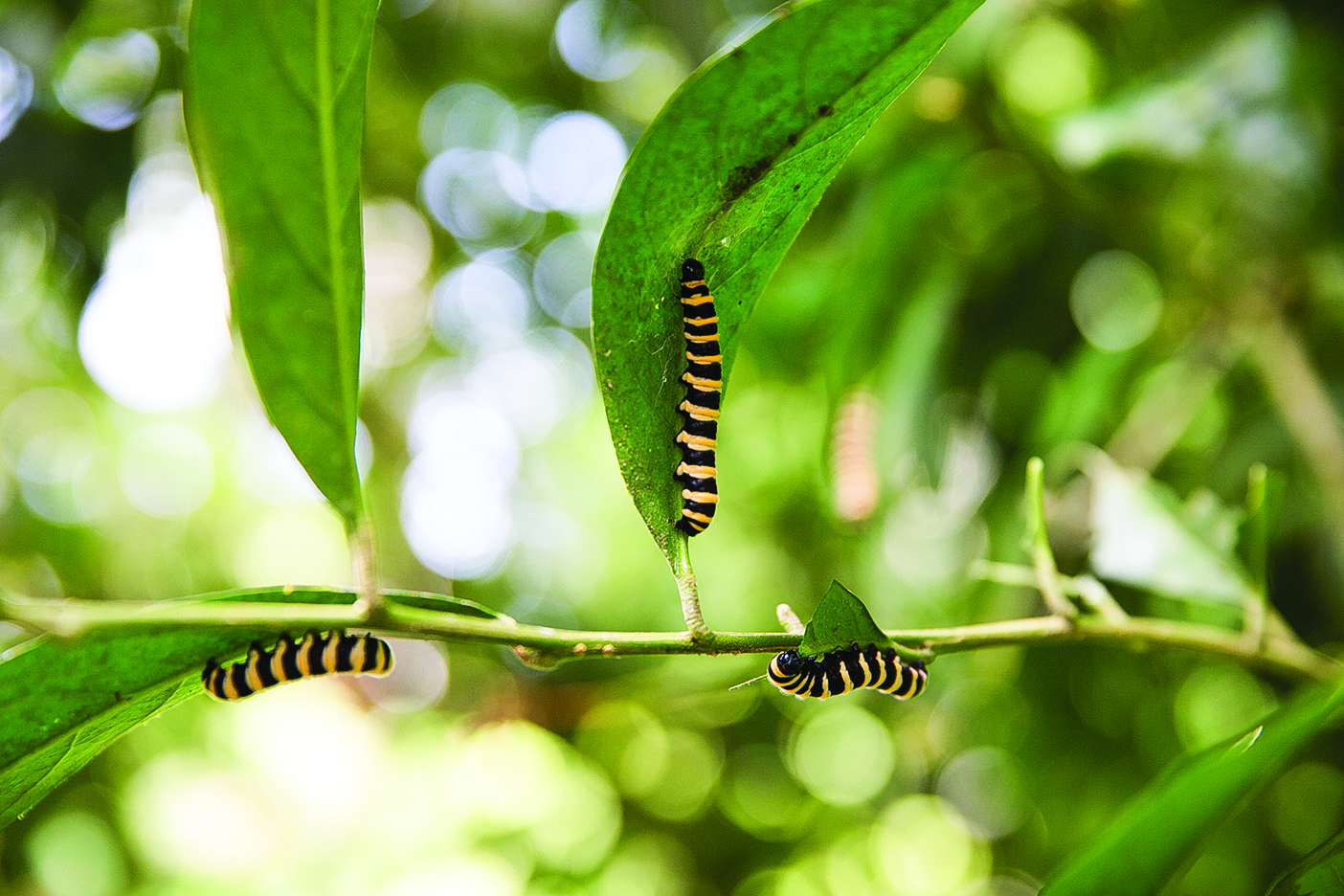
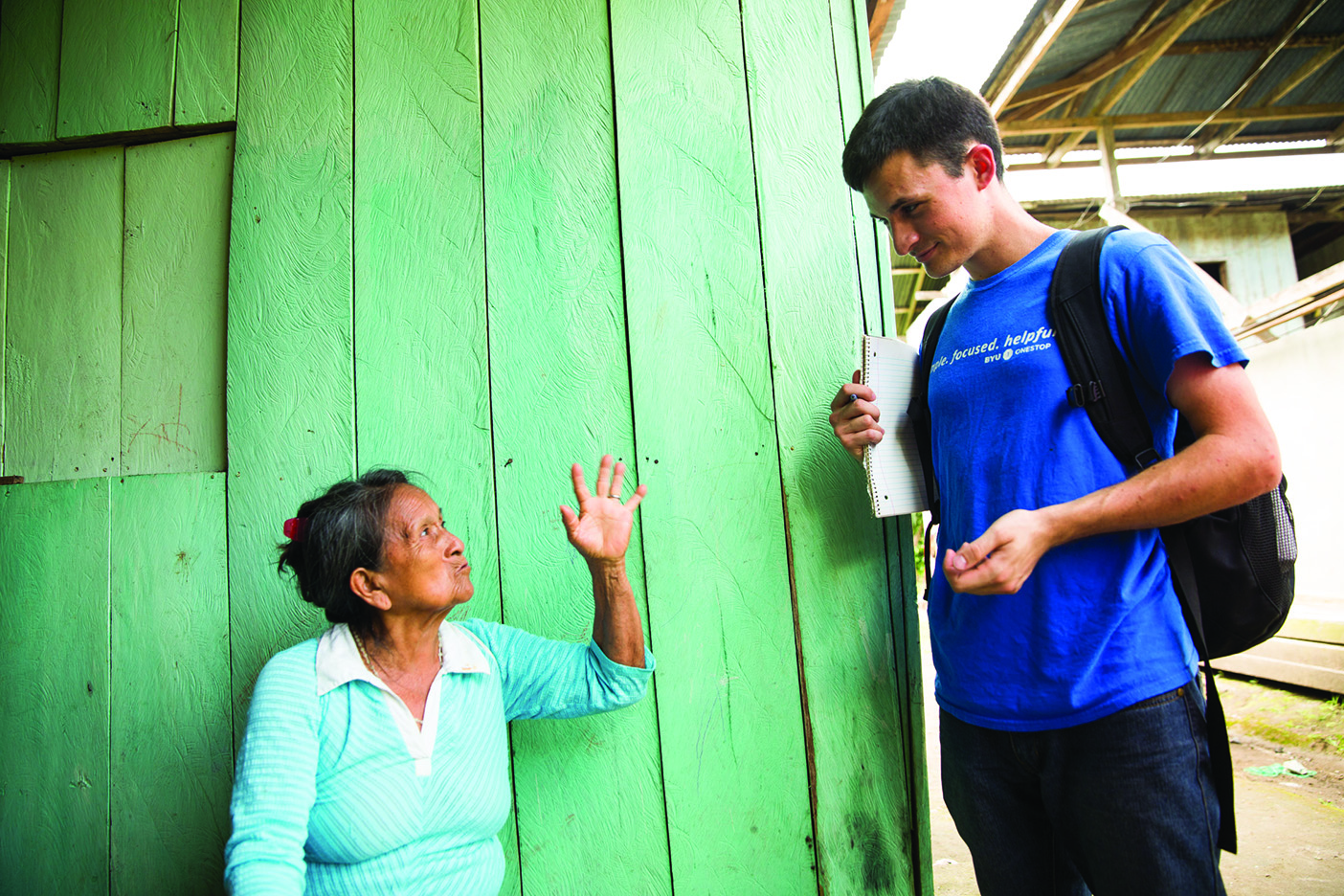
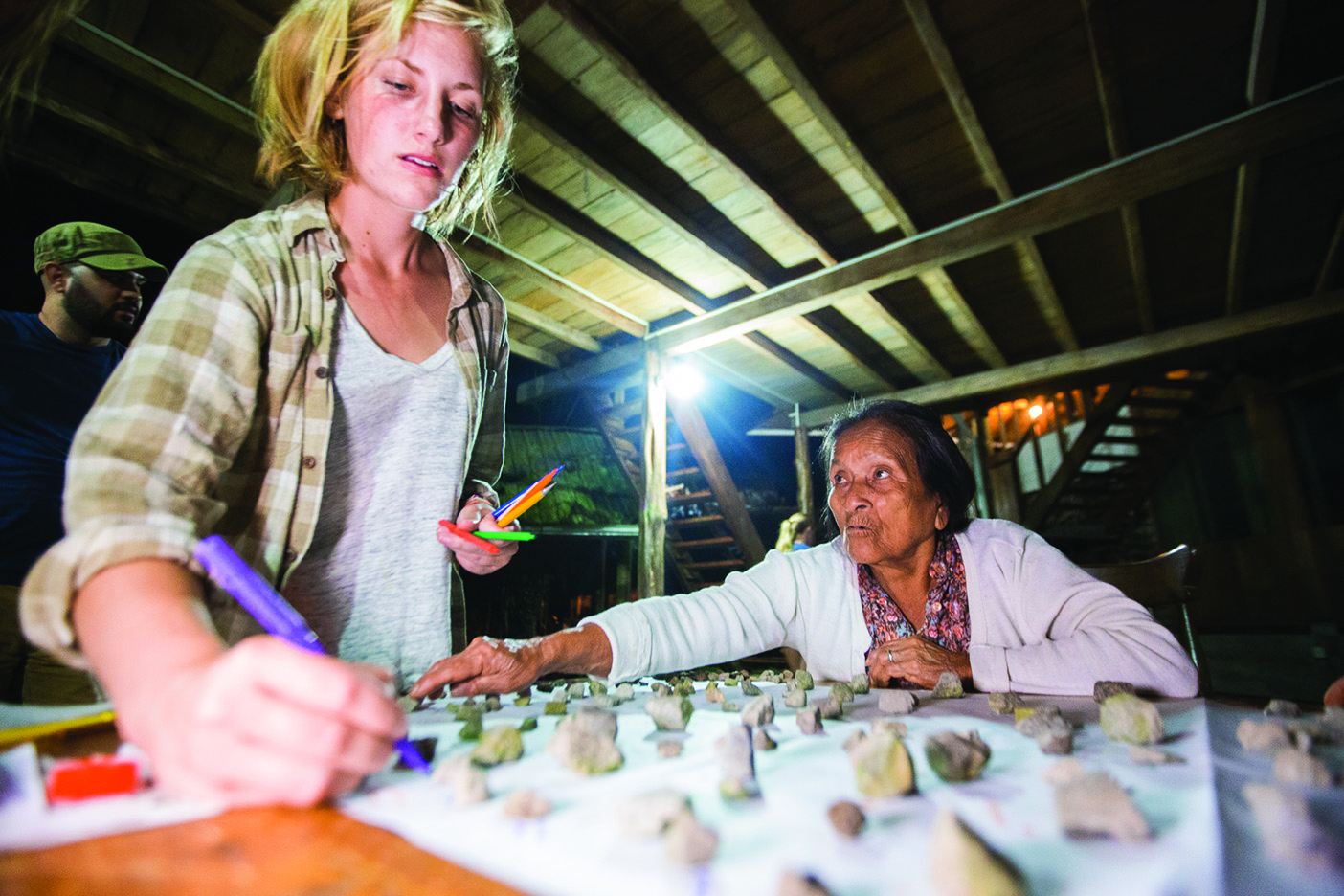
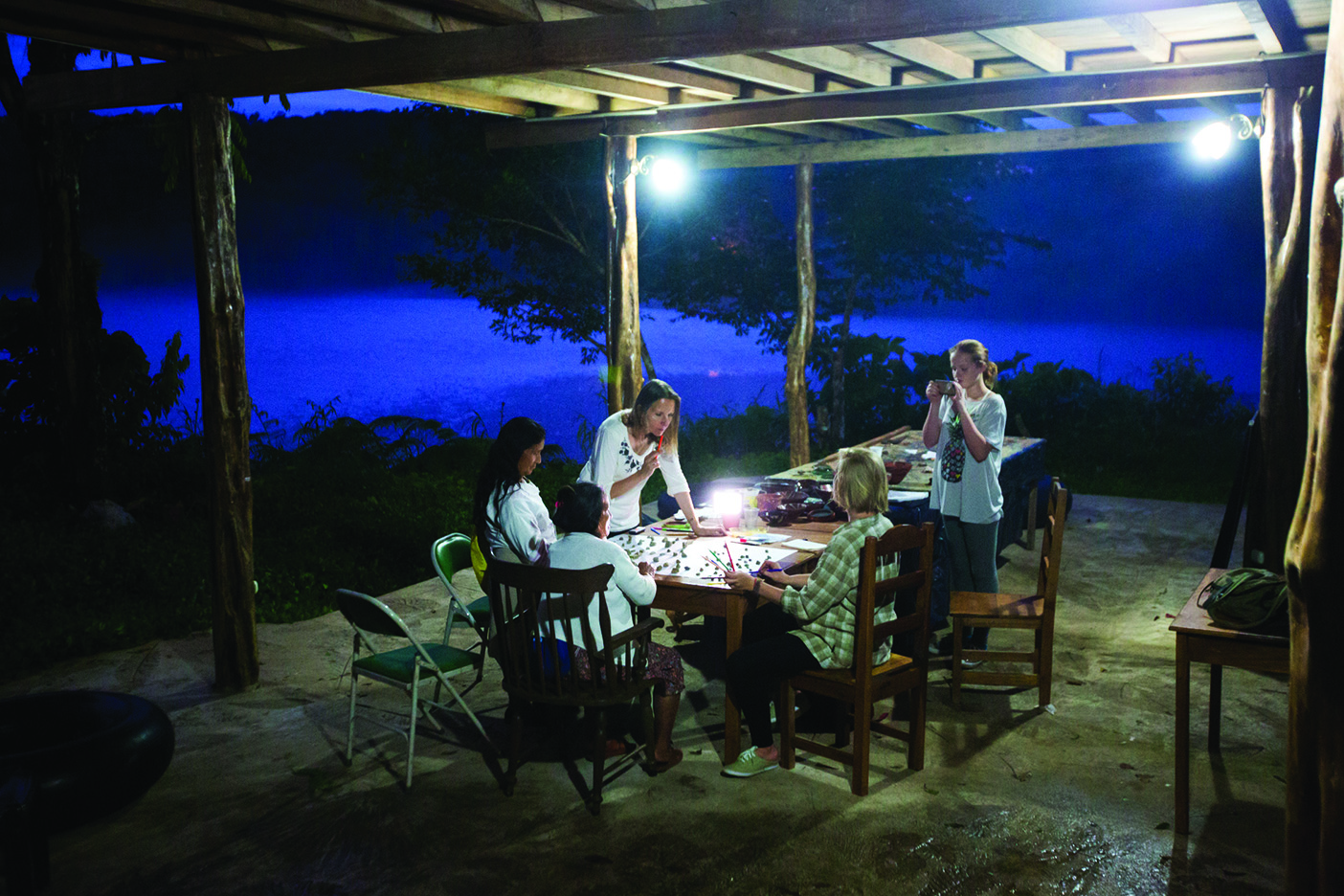
“This experience reveals the importance for Quichua people of carefully observing what they perceive around them,” Nuckolls says. “This, in turn, helps nurture the special intelligence they have about nature and how it works.”
It’s just one insight Nuckolls has gained from spending time living among the Quichua people. “My ability to get to know people in their own settings, where they were comfortable, provided many valuable experiences which helped me enormously”—in her research and personally, she says. “Learning about the culture and lives of [Quichua] speakers has been very exciting, humbling, and thought provoking.”
And she says it has led to lifelong friendships, such as with Luisa: “I developed a lot of respect and affection for individual people who, in turn, treat me like a member of their extended families.”
Feedback: Send comments on this article to magazine@byu.edu.
